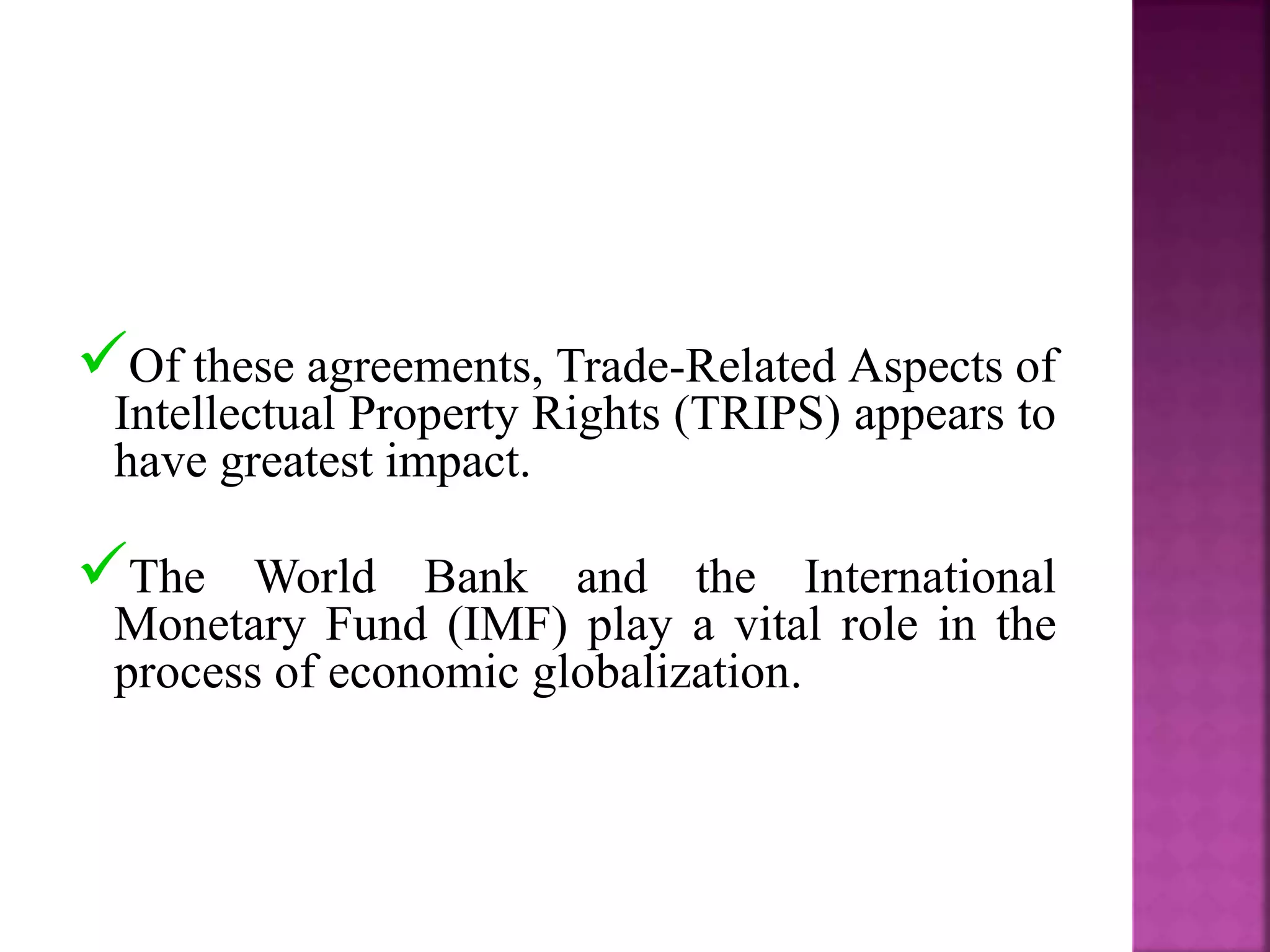The document discusses the impact of globalization on Indian agriculture. It notes that while globalization aims to accelerate economic growth through liberalization and privatization, it has negatively impacted Indian farmers and agriculture. Farmers now face lower output prices, higher input costs, less government support and subsidies, and increased competition from imports. This has led to rising farmer indebtedness, poverty, and even suicide in some cases. While globalization provides opportunities for increased exports, Indian agriculture has struggled with quality issues, production costs, and a lack of infrastructure to effectively compete globally. Overall challenges remain for Indian farmers and agriculture under globalization.











































